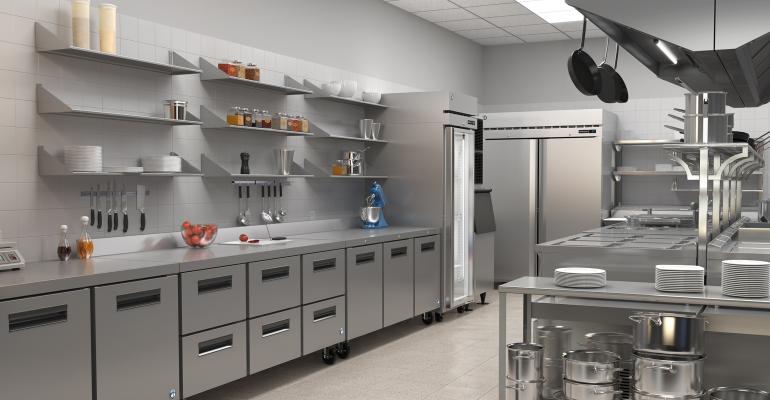Sponsored by Hoshizaki
The fully connected kitchen—decked out with smart equipment that works in unison without handholding by humans—is still making its way to the restaurant industry.
However, advances in ice-machine and refrigerator technology are showing operators the benefits that connectivity can bring by improving efficiency and productivity and reducing operating costs.
Connected equipment enables operators to automate maintenance, respond swiftly to malfunctions, spend less on repairs and control equipment remotely. Smart ice machines and reach-in refrigerators are part of the Internet of Things (IoT), a network of interrelated equipment that operate together with little or no human interaction. The IoT is gaining momentum and paying off its promise to improve business and customer service in the Information Age. The IoT market is on pace to grow to over $3 trillion annually by 2026, according to Business Insider Intelligence.
The remote-monitoring advantage
Hoshizaki ice machines and reach-in refrigerators work with Fastcomm, a third-party customized IoT solution with a secure cloud-based platform. It enables an operator to remotely monitor and control that equipment in real time. For example, if an ice machine has a problem with the freeze cycle, the operator is notified by text or email. The operator can diagnose the problem and update and configure the device remotely.
“All of the data that's generated by the normal operation of the ice machine is stored in the cloud,” said Jon O'Hern, Vice President of Sales at Hoshizaki America. “So if you've had a problem, you can pull that data. There are approximately 18 different parameters that you can look at to diagnose what might be wrong.”
Remote monitoring pays off for operators by reducing downtime and maintenance costs. “A lot of times, you don't know if an ice machine has failed until you run out of ice,” said O'Hern. “By that time, you may have to buy ice to get you through the shift until a service tech can get there.”
But with Fastcomm remote monitoring, as soon as there is a problem, the service company or operator gets a text or email alert about the problem with an error code.
The Fastcomm remote reset function can be especially useful. If an ice machine error code pops up on a Friday night at five p.m., it can be checked online to determine what’s wrong. “If it’s not a serious problem threatening the machine, the operator can press reset and it will continue making ice for the night until a service person can get there,” said O'Hern. That can reduce the number of rush service calls needed and the overall cost of ownership. Furthermore, units that need periodic cleaning may be bundled with service calls to save expenses as well. “You can optimize your maintenance and cleaning and repair in a way that you simply cannot if you don't have remote monitoring,” said O'Hern.
A digital set of eyes
Monitoring remotely will become increasingly important in kitchen operations. Highly publicized foodborne illness outbreaks in recent years have highlighted the need to be vigilant about proper refrigerator and freezer temperatures. Rising utility costs will make it important to monitor energy usage in the kitchen and power down pieces when demand is light.
However, getting a kitchen full of equipment made by different brands to communicate with each other remains a challenge. Restaurant equipment tends to be made by a few big companies with constituent brands that have their own operational parameters. It is complicated to get them all on the same page. Hoshizaki’s approach shows the advantages of a standard communication protocol. “We’re smaller and able to just focus on an ice solution,” said O'hern.
Equipment service and leasing companies and restaurant chains are exploring equipment that supports remote monitoring. “Chains like the way it reduces downtime, lowers repair costs and improves the maintenance and cleaning of units,” said O'Hern. “We're working with a large chain that is looking at this technology to closely monitor ice machine performance over time to reduce water and electrical consumption by modifying the operational pattern of the unit. That’s good for the bottom line and good for the environment.”




